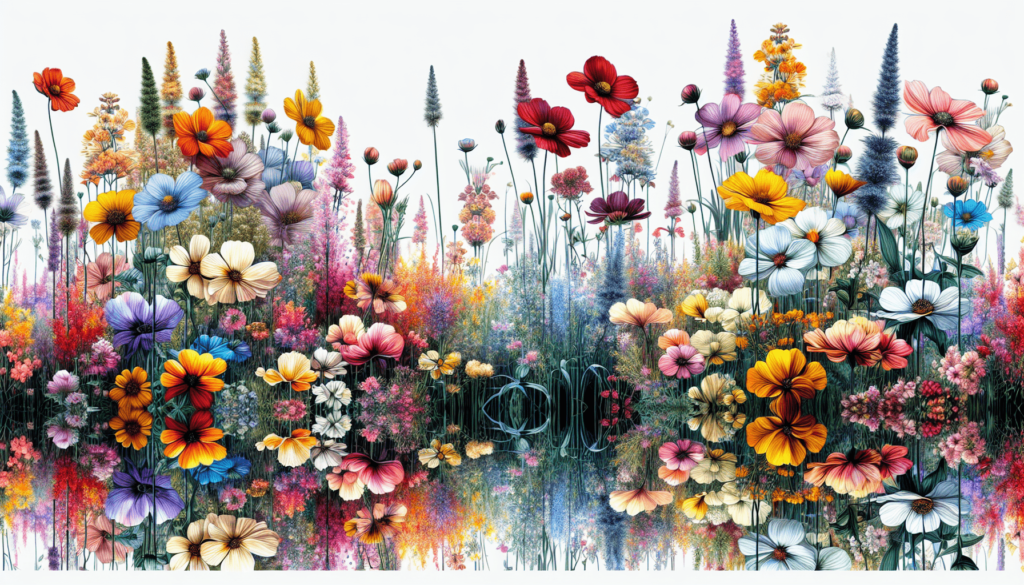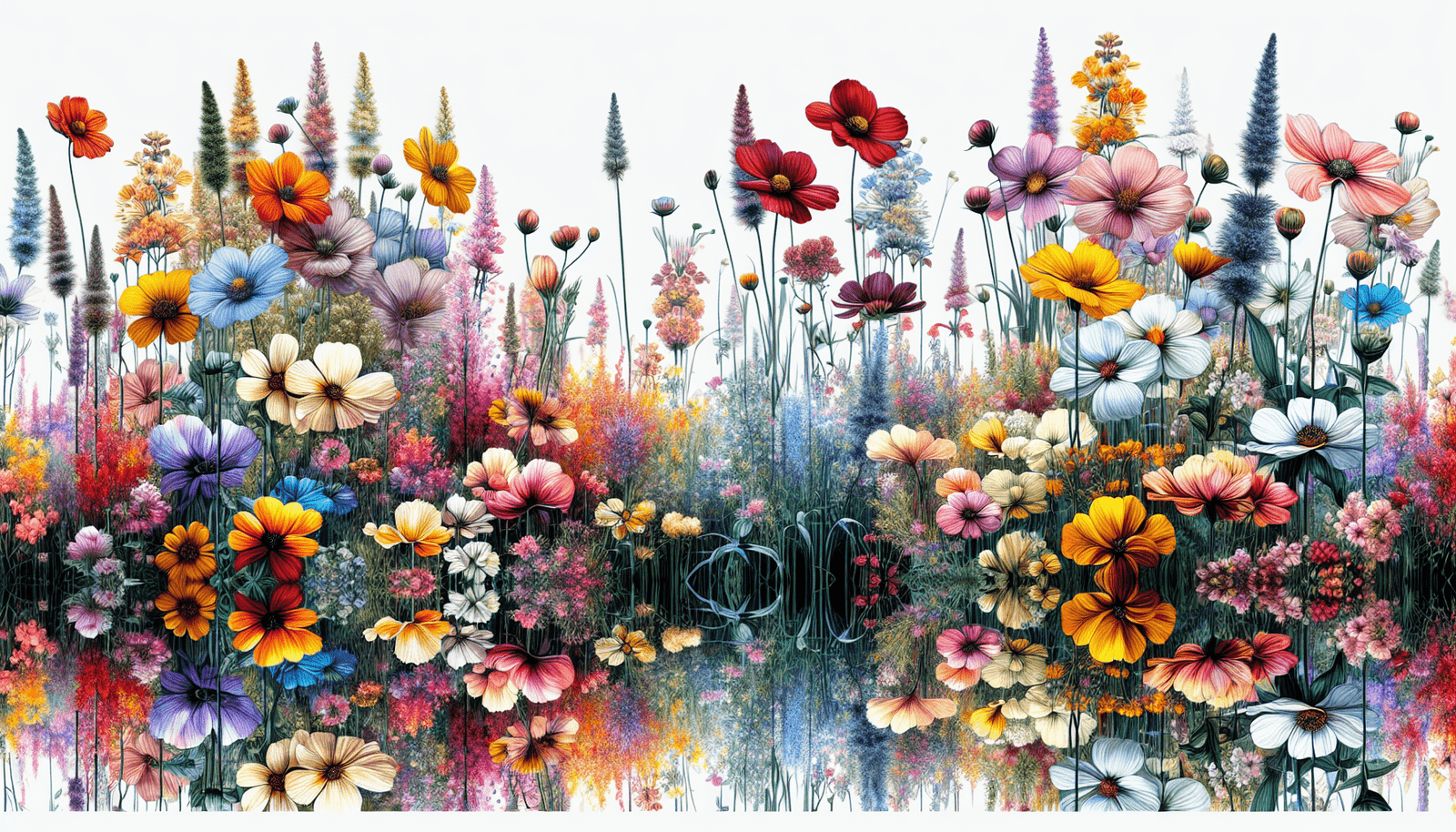Welcome to an article that will guide you through the best techniques for creating your very own wildflower meadow. From selecting the right location to preparing the soil and choosing the perfect mix of wildflower seeds, you will learn all the essential steps to transform a patch of land into a beautiful and vibrant habitat for pollinators and wildlife. Get ready to roll up your sleeves and bring a little piece of nature into your own backyard!
Why Create a Wildflower Meadow?
Are you looking to add a touch of natural beauty to your landscape? Creating a wildflower meadow can transform your outdoor space into a vibrant oasis that attracts pollinators and provides a haven for local wildlife. In this article, we will explore the best techniques for establishing a flourishing wildflower meadow in your own backyard.
Benefits of Wildflower Meadows
Wildflower meadows offer a range of benefits for both the environment and the homeowner. Not only do they provide essential habitat for pollinators such as bees and butterflies, but they also offer a beautiful display of color throughout the seasons. Additionally, wildflower meadows require less maintenance than traditional lawn grass, making them a sustainable and eco-friendly landscaping option.
Pollinator Support
By planting a diverse mix of native wildflowers, you can create a valuable food source for bees, butterflies, and other pollinators. These insects play a crucial role in the pollination of plants, helping to ensure the reproduction of crops and wild plants alike. Supporting pollinators through the creation of a wildflower meadow can help to protect their populations and contribute to overall biodiversity.
Low Maintenance
Unlike traditional lawns that require frequent mowing, watering, and fertilizing, wildflower meadows are relatively low maintenance once established. By choosing the right mix of wildflower species for your specific growing conditions, you can create a self-sustaining ecosystem that thrives without the need for excessive inputs. This makes wildflower meadows a cost-effective and time-saving landscaping solution.
Visual Appeal
Wildflower meadows are not only beneficial for wildlife but also provide a visual feast for the eyes. From vibrant blooms in the spring to seed heads swaying in the breeze in the fall, wildflower meadows offer a dynamic display of colors and textures throughout the year. Whether you prefer a meadow filled with delicate pastels or a riot of bold hues, there are endless possibilities for creating a stunning landscape feature with wildflowers.
Planning Your Wildflower Meadow
Before you start sowing seeds, it’s important to carefully plan out your wildflower meadow to ensure its success. By considering factors such as site selection, soil preparation, and seed selection, you can create an environment that is ideal for wildflowers to thrive.
Site Selection
The first step in creating a wildflower meadow is selecting the right location. Ideally, choose a sunny spot with well-drained soil that receives at least 6-8 hours of sunlight per day. Avoid areas with heavy shade or poor drainage, as these conditions can hinder the growth of wildflowers. Additionally, consider the size and shape of your meadow, taking into account the surrounding landscape and any existing structures.
Soil Preparation
Once you have chosen a site for your meadow, it’s important to prepare the soil to create a hospitable environment for wildflowers. Begin by removing any existing vegetation, such as grass or weeds, from the area. You can do this by hand or use an herbicide to kill the existing vegetation. Next, loosen the soil to a depth of 6-8 inches using a shovel or garden fork to improve drainage and create a seedbed for your wildflowers.
Seed Selection
Choosing the right mix of wildflower seeds is crucial to the success of your meadow. Select a diverse mix of native wildflowers that are adapted to your specific growing conditions, including soil type, moisture levels, and sunlight exposure. Consider factors such as bloom time, height, and color when selecting species to ensure a varied and visually appealing display throughout the seasons. You can purchase pre-mixed seed packets or create your own custom mix based on your preferences.

Establishing Your Wildflower Meadow
Once you have completed the planning phase, it’s time to sow your wildflower seeds and establish your meadow. Proper seed sowing techniques, watering, and maintenance are key to ensuring the success of your wildflower meadow.
Seed Sowing
The best time to sow wildflower seeds is in the spring or fall when soil temperatures are warm and moisture levels are optimal for germination. Begin by evenly broadcasting the seeds over the prepared soil, either by hand or using a mechanical seed spreader. Lightly rake the seeds into the soil surface to ensure good seed-to-soil contact and water gently to moisten the seeds. Avoid burying the seeds too deeply, as they require light to germinate.
Watering
After sowing your wildflower seeds, it’s important to keep the soil consistently moist to promote germination and seedling growth. Water the meadow lightly every few days or as needed, especially during dry periods, to ensure that the seeds do not dry out. Once the wildflowers have established themselves and are growing vigorously, you can gradually reduce the frequency of watering to encourage deeper root growth and drought tolerance.
Maintenance
While wildflower meadows are low maintenance compared to traditional lawns, they still require some care and attention to thrive. Regular weeding, especially in the first year, can help prevent invasive weeds from taking over your meadow and competing with the wildflowers. Additionally, you may need to mow or trim the meadow once or twice a year to prevent the growth of tall woody plants and encourage the reseeding of annual wildflowers.
Enhancing Your Wildflower Meadow
Once your wildflower meadow has become established, there are various ways to enhance its beauty and biodiversity. From adding supplemental plantings to incorporating wildlife habitats, there are plenty of opportunities to further enrich your meadow ecosystem.
Supplemental Plantings
To enhance the diversity and visual interest of your wildflower meadow, consider incorporating supplemental plantings of native grasses, shrubs, or trees. These additional plantings can provide structure, height variation, and seasonal interest to your meadow, creating a more dynamic and resilient ecosystem. Be sure to choose species that are native to your region and compatible with the existing wildflowers in your meadow.
Wildlife Habitats
Creating wildlife habitats within your wildflower meadow can attract a variety of beneficial insects, birds, and other wildlife to your garden. Install birdhouses, bee hotels, or butterfly feeders to provide shelter and food sources for local wildlife. You can also leave areas of your meadow unmowed or plant native grasses that provide nesting sites and protective cover for ground-dwelling animals. By incorporating wildlife habitats into your wildflower meadow, you can increase biodiversity and promote a healthy ecosystem.
Seasonal Maintenance
Throughout the year, there are various maintenance tasks that you can undertake to ensure the long-term health and vitality of your wildflower meadow. In the spring, you may need to remove dead plant material and trim back any woody growth to allow the wildflowers to thrive. During the summer, monitor the meadow for signs of pests or diseases and address any issues promptly to prevent the spread of pathogens. In the fall, consider allowing some areas of the meadow to go to seed to encourage self-seeding and natural regeneration.

Conclusion
Creating a wildflower meadow is a rewarding and sustainable way to enhance your outdoor space while supporting local wildlife and pollinators. By following the best techniques for site selection, soil preparation, seed selection, and maintenance, you can establish a vibrant and colorful meadow that will delight you throughout the seasons. Whether you are a seasoned gardener or a beginner, creating a wildflower meadow is a rewarding endeavor that will bring beauty and biodiversity to your landscape for years to come.

